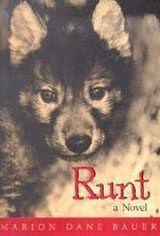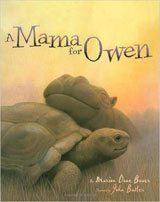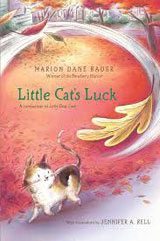Who doesn’t love a puppy? Well, admittedly there are some folks who don’t, especially considering how difficult both ends of such creatures are to keep under control. So let’s rephrase the question: Who doesn’t love a puppy in a children’s story? Or even a frog or a toad, for that matter?
Something happens to a story when it is populated by animals, something easy to feel but difficult to define. Perhaps it’s what a sales rep for one of my publishers once referred to as “the aw factor,” not awe but aw-w-w‑w! He predicted my upcoming picture book would be successful because it had “the aw factor.”
Animal characters are so completely themselves, so utterly without layers or complications. The big, bad wolf will always be big and bad. Lassie will always faithful and true, making her way home. And we respond to each with our whole hearts, hating or loving.
I once had a student, a mature woman, who refused to read any story that threatened injury or death to an animal, no matter how well written, no matter how well earned the story’s traumatic action might be. But that same reader was not in the least offended by On My Honor, my novel in which a child dies. I suspect she is not alone in her response.
 To take her side, at least for a moment, I’ll admit it is entirely too easy to elicit tears through an animal’s death, especially when the animal is somewhat peripheral to the story. I used such a plot device myself in a long-ago novel, Rain of Fire. Perhaps, were I to rewrite that story, I would still decide to kill the fictional cat, though I’m aware these days of my own increasing caution about such dramatic/traumatic plot turns. In part that may be because I have learned to employ more subtle devices. Maybe the shift has come, too, from growing older and wanting the world around me to be a bit … well, gentler, I guess.
To take her side, at least for a moment, I’ll admit it is entirely too easy to elicit tears through an animal’s death, especially when the animal is somewhat peripheral to the story. I used such a plot device myself in a long-ago novel, Rain of Fire. Perhaps, were I to rewrite that story, I would still decide to kill the fictional cat, though I’m aware these days of my own increasing caution about such dramatic/traumatic plot turns. In part that may be because I have learned to employ more subtle devices. Maybe the shift has come, too, from growing older and wanting the world around me to be a bit … well, gentler, I guess.
In Runt, my novel in which the characters are members of a wolf pack, animals die, too, and the deaths are affecting. The difference, however, is that I entered the story knowing some death must occur if I intended to represent accurately the reality of the wolves’ lives. And as with any other strong action, to be effective — to be drama rather than melodrama — the plot moment must rise out of the necessity of the characters, not be imposed from on high.
 But what about the picture-book lamb that goes out into the world and gets lost from his mother, the story I demanded be read to me again and again and again when I was a preschooler? Or the baby hippo who is separated from his pod during a tsunami and ends up bonding with a giant male tortoise, his real-life story presented in my picture book, A Mama for Owen? Or what about another of my picture books, If You Were Born a Kitten, in which I lead up to a presentation of a child’s birth through first depicting the births of various animals? How does the animal nature of the characters impact us as readers?
But what about the picture-book lamb that goes out into the world and gets lost from his mother, the story I demanded be read to me again and again and again when I was a preschooler? Or the baby hippo who is separated from his pod during a tsunami and ends up bonding with a giant male tortoise, his real-life story presented in my picture book, A Mama for Owen? Or what about another of my picture books, If You Were Born a Kitten, in which I lead up to a presentation of a child’s birth through first depicting the births of various animals? How does the animal nature of the characters impact us as readers?
 Animals, the living ones as well as those that rise off the page, seem to call forth a purity of response from us. They capture our whole hearts: Jane Goodall’s chimps, the dog who lies at my feet as I write this, the little cat mother in my upcoming verse novel, Little Cat’s Luck. They all touch into the most tender, the most human part of ourselves.
Animals, the living ones as well as those that rise off the page, seem to call forth a purity of response from us. They capture our whole hearts: Jane Goodall’s chimps, the dog who lies at my feet as I write this, the little cat mother in my upcoming verse novel, Little Cat’s Luck. They all touch into the most tender, the most human part of ourselves.
And because they are so fully themselves, we become more fully who we are capable of being, caring, generous, grateful.
Blessed to share our planet — and our stories — with other species.

